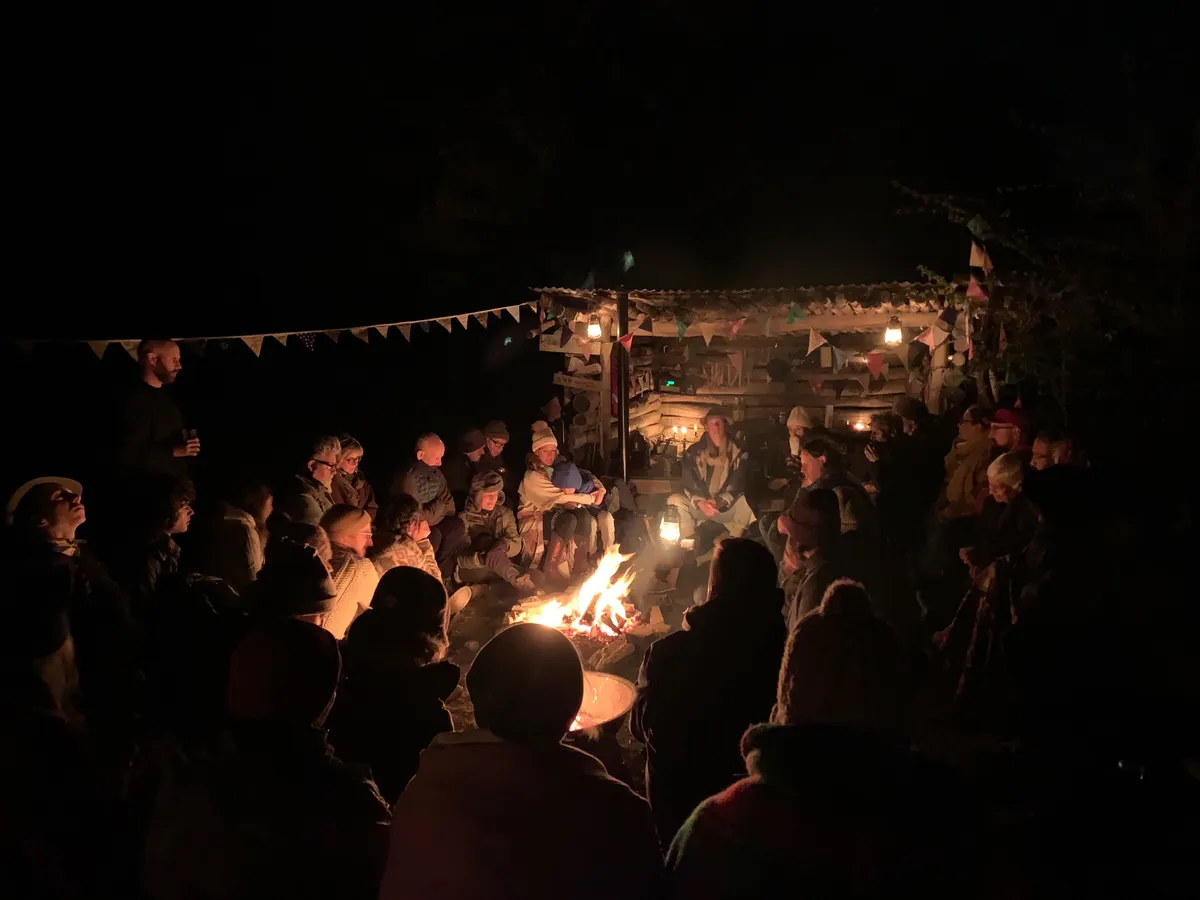An ugly, unsafe landscape, left behind by the collapse of the open-cast coal mining industry in East Ayreshire, led to art: the massive installation of abstract theoretical physics and cosmology by Charles Jencks called Crawick Multiverse. It forms a new monument, handing down a riddle for future generations to interpret. This has led to more art: a project that asks local people to compose and play music about their stories on that land. This will, no doubt, lead to more art.

For as we move through the natural world and even as we morph it, art is left in our wake. Whether poetry, paintings, sculpture or music, we layer on art as a byproduct of our inherent need to tell stories, to create and, as US author Toni Cade Bambara said, to make the revolution irresistible. The rest, for some, is history. For some, the rest is politics. Yet to the beholder, the rest is art.
But what is that faint melody that brings us back? As we possess personal playlists, guarded through private listening fed directly into our ears, and as we gradually spend less time in nature, how are we reminded of the songs once sung?
Music is a way to recognise our connectedness across both space and time. “The appreciation of music is a universal feature of mankind; music-making is found in all societies and it is normal for everyone to participate in some manner,” writes archaeologist Steven Mithen. It is thought that musical ability came about even before language, and was used to communicate, alongside body movement and symbolism. Evolutionary scientists argue that our modern human instinct to sing is equal to our predisposition for speaking.
More related content:
- Podcast: a sensational evening of singing with nightingales – with folk singer Sam Lee
- How Great Malvern shaped Narnia, Middle Earth and Nimrod
- The best classical music inspired by the British countryside and its wildlife
Sam Lee leads a session around the campfire at a Singing With Nightingales event.

It’s interesting to note examples of music from the animal world that are recognisable to us, in communion with non-human life as well. In just one of many examples, humpback whales use musical intervals that are similar to our own scales, use repeating phrases similar to refrains in our music and even structure their songs in similar ways using the ABA form.
Our ancient ancestors would have imitated the sounds of nature in order to communicate about the environment around them. Although this developed for survival, its use spread and changed over time, becoming important for attracting partners, between mothers and infants and, later, used as part of ritual, funerals, entertainment, feasts and social bonding. Early rhythms were likely timed with the movements of repetitive physical work and offered a base on which to lay melody. As a communal activity, music was important to demonstrate group co-operation and solidarity, improving chances of survival.
But the music from this distant past is long lost. In more recent history, only the music of high society would have been recorded – a sliver of the riches once heard. Yet much is unchanged in the link between nature and music. Before the industrial revolution, song imitated, or was influenced by, nature. Composers became known by their associated landscapes – Elgar in the Malverns or Britten on the Suffolk coast. The purpose of music hasn’t changed much over time, used for expressing emotions, dancing, rituals, pleasure and to promote solidarity.
While it could be said that electronic sound and post-industrial living has changed our relationship with music, it still forms an important part of our social world and, indeed, some would claim it to be part of their very survival. Nature still gets a look-in. Recordings of the natural world feature in our modern soundscapes, incorporated into songs or played through speakers as we try to find calm and draw nature in to our distant minds.
Our long evolutionary development accompanied by music has now encoded our need for it into our physical fabric. As long as the landscape is there, the artists will come and the beat, the tones, the melodies and the songs will play on.
Main image: The Malverns is known for inspiring Elgar, Tolkien and CS Lewis./Credit: Getty

